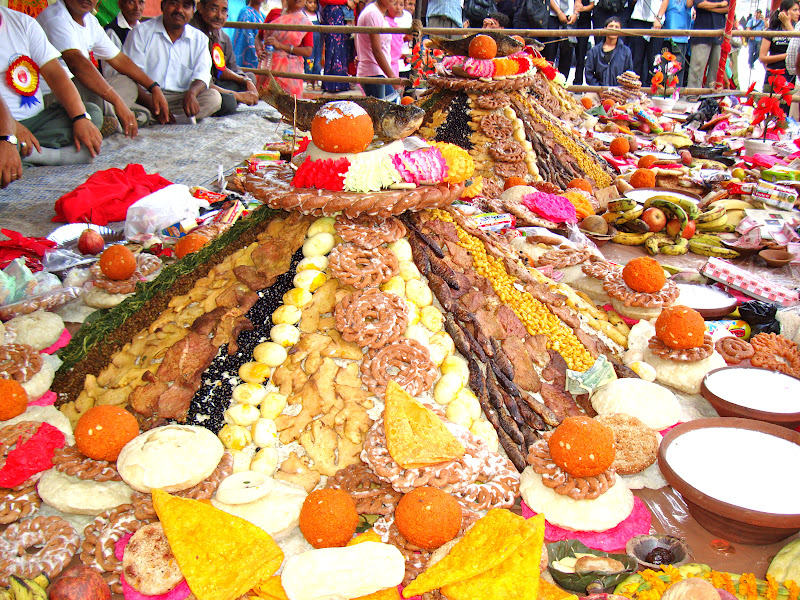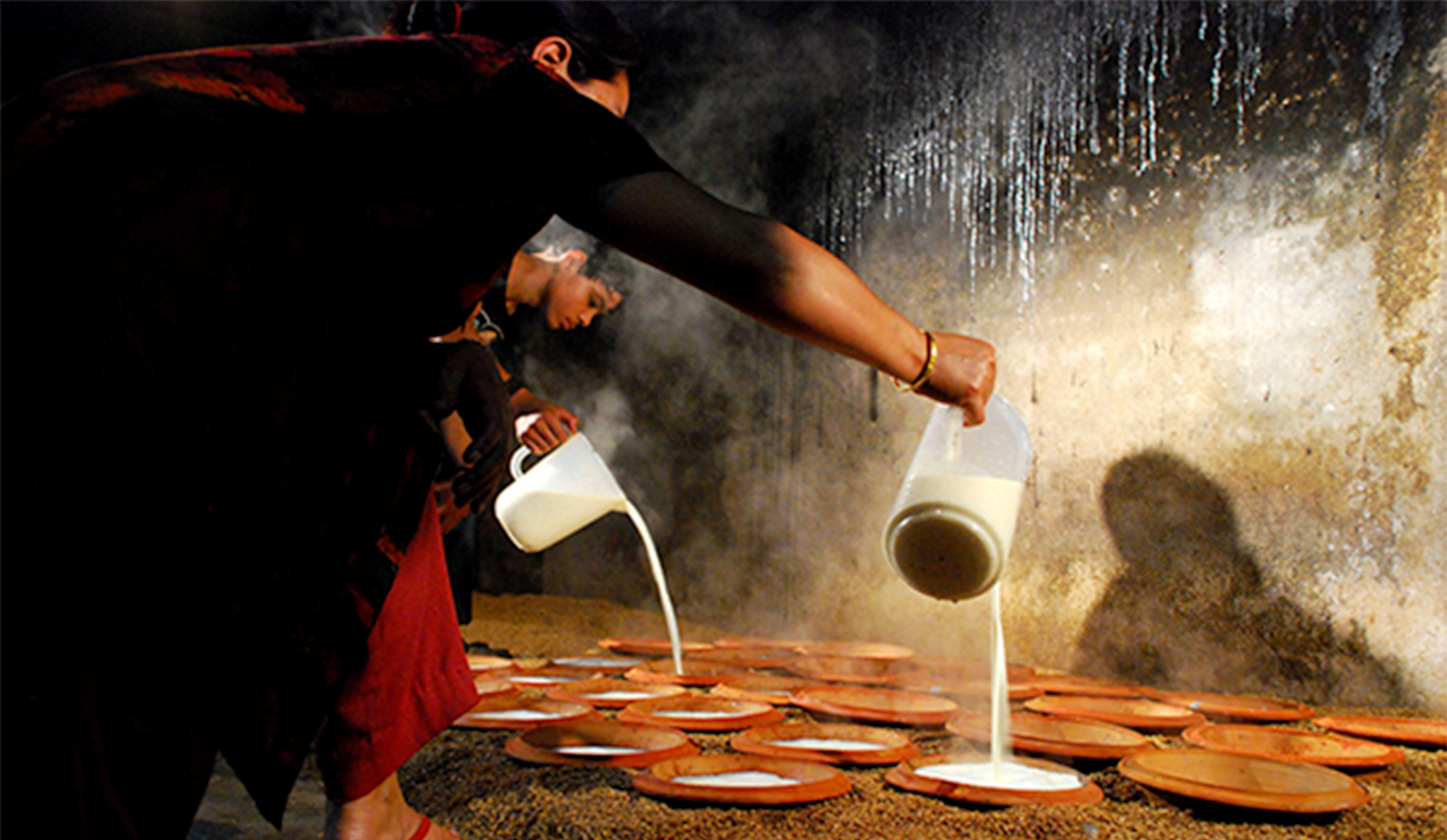Dive into the World of Newari Cuisine: Juju Dhau, Bara & More
Discover the rich culinary heritage of Nepal’s Kathmandu Valley through Newari cuisine. Renowned for its complexity and depth, Newari foods such as the famed Juju Dhau (King of Yogurt), savory Bara, spicy Choila, and sweet Yomari reflect a culture with centuries-old roots. With festivals, rituals, and daily life all woven around food, the flavors, textures, and traditions of the Newar community offer an authentic taste of Nepal like no other.

Why Savor Newari Cuisine?
A Flavorful Fusion of Culture & Community
- Experience over 200 distinctive dishes originating from Kathmandu Valley's Newar people.
- Dive into culinary rituals central to Nepalese festivals, weddings, and daily life.
- Savor healthful and inventive uses of lentils, buffalo meat, vegetables, and native grains.
- Taste delicacies prepared and presented in traditions dating back centuries, such as Juju Dhau in clay pots.
200+
Unique Newari Dishes
10+
Iconic Festival Foods
3
Major Regional Food Hubs
What Makes Newari Cuisine Extraordinary?
Food as Ritual, Identity & Art
Newari cuisine is the heart of Kathmandu Valley's food culture. Grounded in indigenous traditions, it’s famous for feasts (sapu mhicha banquets, Samay Baji, and elaborate ritual spreads) as well as for everyday comfort food like Bara and Wo (lentil pancakes), Chhoila (spiced grilled buffalo), and Chatamari (“Newari pizza”).
Crafted from local produce, buffalo milk, black lentils, rice, mustard oil, and native spices, Newari food is rich, spicy, and often surprisingly inventive. Its centrality to Newar religious ceremonies, life-cycle rituals, and festivals means that iconic foods like Juju Dhau and Yomari hold cultural significance beyond taste—they symbolize purity, celebration, and well-being.


Newari Specialties You Must Try

Juju Dhau – King of Yogurt
A legendary dessert from Bhaktapur, Juju Dhau is made with rich buffalo milk, sweetened, and set in porous clay pots using time-honored methods. The result: ultra-creamy, mildly sweet yogurt with a hint of earthiness.

Bara (Wo) – Savory Lentil Pancake
Nutritious and filling, Bara is made from ground black lentils spiced and fried into thick, golden patties. Enjoyed plain or topped with egg, mince, or vegetables, it’s served at festivals, family gatherings, and street-side eateries.

Chatamari – The Newari Pizza
A rice-flour pancake topped with spiced minced meat, vegetables, or eggs. Grilled on a clay griddle, Chatamari balances crisp edges with soft centers and offers rare flavors not found elsewhere in Nepal.
More Newari Culinary Gems & Their Stories
Samay Baji
A festive platter with beaten rice (chiura), Chhoila (spiced buffalo), boiled eggs, black soybeans, pickles, fried fish and more – served during major religious and social occasions.
Yomari
Sweet dumpling of rice flour, filled with molasses and sesame – a festival treat during Yomari Punhi, symbolizing the harvest.
Lakhamari
Crispy, intricately shaped sweet bread dipped in sugar syrup, a traditional wedding special often packaged as a gift for guests.
Choila
Smoky, spicy grilled buffalo (or chicken), marinated with mustard oil, garlic, ginger, and chili; a quintessential Newari bar snack and a Samay Baji must-have.
Sapu Mhicha
Deep-fried buffalo tripe stuffed with bone marrow – unique to Newari feasts and famed for its contrasting textures; a true delicacy.
🎉
Festival Specialties
👑
Ritual Foods
🍮
Sweet Newari Treats
🍺
Bar Snacks
🍨
Veg & Non-Veg Options
Rituals, Festivals & Everyday Eating in Newari Culture
From wedding feasts to daily snacks, food rituals mark every milestone in Newar society. Juju Dhau is offered in Mha Puja (self-purification ceremony), Yomari graces winter full moons, and Samay Baji is compulsory at every festival and Newari New Year. Even Bara is enjoyed both as a ritual food for ancestral worship and a beloved street snack.
At local fairs or neighborhood eateries, Chatamari and Bara are cooked to order, and every festival brings out new variations of Samay Baji and sweets. In markets like Bhaktapur and Patan, visitors find rows of Juju Dhau pots and vendors grilling Bara as drums and temple bells ring in the background.

Newari Cuisine & Culinary Innovation
Honoring the Past, Inspiring the Future
The diversity of Newari recipes reflects long-standing trade, artisanship, and a cosmopolitan city culture. Street food stalls and fine-dining restaurants alike reinterpret classics—Chatamari gets modern pizzalike toppings, and Bara is served with fusion dips. In Bhaktapur, generations of families compete to produce the creamiest Juju Dhau, keeping ancient craft alive.
Vegetarian and vegan options flourish: Bara, Chatamari, Yomari, Samay Baji with chana (chickpea) curry, and dozens of pickles. But fans of bold flavors and offal will discover delicacies like Sapu Mhicha and Ta:kha (buffalo aspic). Many recipes date back hundreds of years—a heritage now recognized by UNESCO and celebrated in food festivals nationwide.
Regional Notes & Innovations:
- Patan known for Lakhamari, crunchy ring breads at weddings.
- Bhaktapur for Juju Dhau and rice-based snacks.
- Kathmandu for ultimate Samay Baji spreads and festival shops.
- Newar homes pass down secret achar recipes and cooking methods.
Ready to Savor Tradition? Taste Newari Cuisine Firsthand!
Explore Newari kitchens, food festivals, and the ancient alleys of Bhaktapur to discover why Newari food is the soul of Kathmandu Valley’s culture.
Book a Newari Food Tour or Cooking Workshop

10 Must-Try Newari Dishes & Where to Find Them
Taste your way through the Kathmandu Valley with these culinary highlights:
- Juju Dhau (Bhaktapur, Patan)
- Bara/Wo (Street vendors)
- Chatamari (Local restaurants)
- Samay Baji (Feast platters)
- Choila (Bar snacks)
- Yomari (Winter markets)
- Sapu Mhicha (Special events)
- Lakhamari (Sweet shops)
- Ta:kha (Ceremonial meals)
- Chhyang (Local rice beer)
Newari Cuisine – FAQs
Explore frequently asked questions to enrich your experience of Nepal’s Newari culinary treasures.
